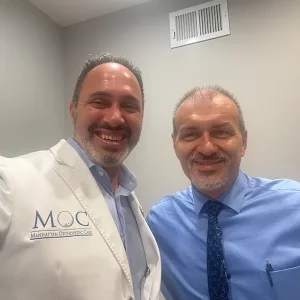The knee joint is the most complex and largest joint in our body. The anatomy of the knee shows the elements that the knee consists of: bones, tendons, and ligaments. The following video presentation is a detailed presentation of the anatomy of the knee.
X
Anatomy Of The Knee
Learn more about the elements of the knee joint
Real Patient Reviews
Check out the praises Dr. Tehrany receives from his patients

March 12, 2024
In 2021, when Walter Lamar found himself in excruciating knee pain after a fall from a ladder while cleaning his gutters, he turned to the internet for a solution. His search led him to a review from a Broadway dancer who had undergone successful meniscus tear surgery with Dr. Armin Tehrany at Manhattan Orthopedic Care. […]

January 24, 2024
I was injured on the job both times, and both injuries required surgery. Dr. Tehrany and staff, from beginning to the end of each injury, went above and beyond to accommodate my needs. From pre to post surgery they were there in every way. He and his staff were extremally helpful an patent with issues […]

November 4, 2016
Multiple shoulder injuries are hard to play through, especially for sports enthusiasts who are used to being constantly on the move and active. David Apel had an appointment with Dr. Armin Tehrany after his mountain biking accident that resulted in multiple shoulder injuries. David had suffered an AC joint displacement, torn ligaments, a partially detached […]

October 28, 2016
Choosing the right orthopedic doctor can be a real challenge. Oftentimes, the choice is restricted by the insurance plan, making it even harder to find the professional who will carefully listen to patient’s needs and completely devote themselves to providing a successful treatment. Leila Gutierrez wasn’t completely satisfied with her first orthopedic doctor. Due to […]


























